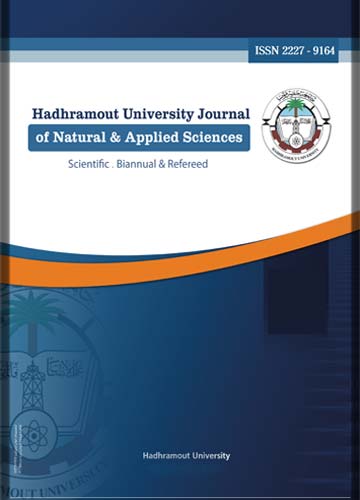The Identification and Antibiotic-Susceptibility Profiling of Non-Hospital Wound Infecting Staphylococcus aureus Isolated from Ghail-Bawazeer Patients, Yemen
Keywords:
Antibiotic sensitivity, Multi-drug, S. aureus, Wound, biochemicalAbstract
The continuous increase in the resistance of pathogenic Staphylococcus aureus isolated from non-hospital
infected wounds to the novel chemical classes of antibiotics is of great public health importance. This problem
prompted the researchers to study the antibiotic susceptibility of such strains. Twenty wound pus samples were
collected and selected randomly from 20 non-hospital wound infected patients of different ages who attended
different medical laboratories in Ghail-Bawazeer, Yemen, from October to December 2020, and 24 bacterial isolates
were analyzed using morphological, cultural, and biochemical characterization for the isolation and identification of
S. aureus. Based on the morphological and cultural characteristics, only 17 isolates appeared in the form of golden
yellow colonies, non-motile, gram-positive clustered cocci, from which 11 isolates were distinguished biochemically
as S. aureus. The antibiotic susceptibility of the identified S. aureus to ten antibiotics of different classes was
determined using the modified Kirby-Bauer disk diffusion technique. The major risk was the emergence of
methicillin-resistant S. aureus isolates (MRSA) (n = 11, 100%), and (n = 9, 81.8%) of isolates were multidrugresistant. There was a feeling of reassurance represented by the presence of other antibiotics that inhibited the
growth of all isolates, starting with Tetracycline, Gentamicin, and Levofloxacin and ending with Novobiocin and
Norfloxacin. The inhibitory effects of the tested antibiotics against each expected S. aureus were significantly
different at the 0.05 level, except Novobiocin, Gentamycin, Methicillin, and Metronidazole. There were no
significant differences. Continuity of work to identify the remaining wound strains associated with patients residing
in Ghail-Bawazeer and their antibiotic sensitivity is required.




